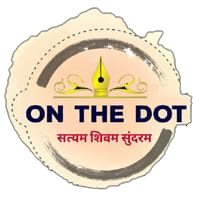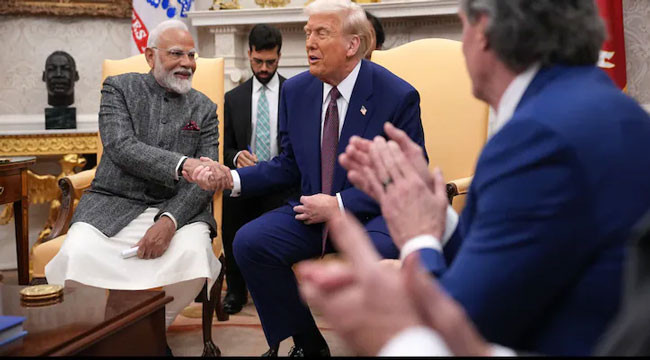Prime Minister Narendra Modi’s visit to the United States has captured global attention, especially due to his meeting with U.S. President Donald Trump. This is the first such encounter after Trump threatened to impose tariffs on India and other countries, making this discussion significant. During their talks, both leaders discussed ways to address the trade tensions. Trump, known for his negotiating skills, referred to PM Modi as a superior negotiator. Meanwhile, PM Modi reiterated his commitment to making India great again, similar to Trump’s “Make America Great Again” slogan.
Strengthening Military Relations:According to Financial Times, the U.S. is eager to strengthen its military ties with India. A key component of this relationship is the potential sale of F-35 fighter jets to India, which is seen as a step towards enhancing military cooperation between the two nations. This move is also viewed as part of the broader U.S. strategy to counter China’s growing influence in the Indo-Pacific region.
Return of Indian Nationals:PM Modi emphasized the issue of illegal Indian immigrants in the U.S. and called for their repatriation. Reuters highlighted this demand, alongside Modi’s assertion of dismantling human trafficking networks. However, both leaders refrained from discussing sensitive topics like the rights of minorities during their meeting.
Symbolic Nature of the Meeting:The BBC described the meeting as symbolic, noting that there was limited progress on resolving trade disputes. Nevertheless, it acknowledged that both leaders used the opportunity to reinforce their commitment to strengthening strategic ties and shared geopolitical interests.
Human Rights Concerns:Al Jazeera criticized the leaders for avoiding discussions on democratic values and press freedom, raising concerns about human rights during the meeting. The lack of dialogue on these crucial issues sparked criticism from various quarters.
Geopolitical Context:AFP highlighted the geopolitical context of the meeting, focusing on the broader U.S. strategy to counter China’s influence in the region. Despite strong statements, AFP pointed out that there was no immediate progress in resolving trade tensions between the two countries.
Domestic Reactions:ABC News provided insights into domestic reactions in both countries, stating that the meeting was seen as a diplomatic success. However, opposition leaders in both India and the U.S. criticized the lack of concrete agreements.
Impact of Tariffs:CNN discussed how Trump’s tariffs could be particularly challenging for developing countries, especially India, Brazil, Vietnam, and other Southeast Asian and African nations. These countries may face higher tariff rates on U.S. imports, which could affect trade relations.
Prime Minister Modi’s visit to the U.S. focused on trade, military cooperation, and regional security. While sensitive issues like minority rights and human rights were avoided, the meeting reinforced the importance of U.S.-India relations. Both leaders emphasized strategic cooperation, particularly in countering China’s influence, but immediate progress on trade issues remained limited.




